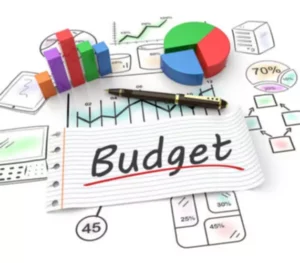
He currently researches and teaches economic sociology and the social studies of finance at the Hebrew University in Jerusalem.
What is an example of fixed cost in a project?
Fixed costs stay the same and do not change throughout the project lifecycle. Examples of fixed costs include setup costs, rental costs, and other related costs.
It is fundamental to accurately consider the potential changes in fixed costs over time. Neglecting this can lead to underestimating or overestimating costs, resulting in flawed decision-making and strategies. Another critical benefit of effectively managing fixed costs is improved efficiency. Businesses that optimize fixed costs will likely have streamlined processes and cost-effective operations. Adjusting your revenue projection would guide future business strategies and decision-making.
How do fixed costs differ from variable costs?
On the other hand, if a business has low fixed costs, its break-even point is much lower. Knowing your fixed costs can also help you calculate your break-even point. This is the number of units you need to sell to make your business profitable. The first illustration below shows an example of variable costs, where costs increase directly with the number of units produced. This can also help in weathering economic downturns or unexpected market changes.
Utility pricing structure hopelessly conflicted Jeffrey Scharf, Everybody’s Business – Santa Cruz Sentinel
Utility pricing structure hopelessly conflicted Jeffrey Scharf, Everybody’s Business.
Posted: Thu, 22 Jun 2023 21:50:46 GMT [source]
Since they are changing continuously and the amount you spend on them differs from month-to-month, variable expenses are harder to monitor and control. They can decrease or increase rapidly, cut your profit what is the eligibility criteria to apply for ima margins and result in a steep loss or a whirlwind profit for the business. Fixed Costs are independent of output and its dollar amount remains constant irrespective of a company’s production volume.
What are fixed costs?
It will remain the same per unit even when the production goes up. The break-even point is the required output level for a company’s sales to equal its total costs, i.e. the inflection point where a company turns a profit. In economics, there is a fixed cost for a factory in the short run, and the fixed cost is immutable. But in the long run, there are only variable costs, because they control all factors of production.
How to calculate fixed cost?
Take your total cost of production and subtract your variable costs multiplied by the number of units you produced. This will give you your total fixed cost.
Once established, fixed costs do not change over the life of an agreement or cost schedule. Although variable costs are quite often discretionary expenses, some may be necessities. Buying gas for your car each month is a variable expense, as are car repairs and maintenance. Your utility bills may also be variable expenses because they may change from month to month. For example, you might spend more on electricity in July than you do in December because of air conditioning.
AccountingTools
Since the cost remains constant throughout the specified period, reporting and auditing become very easy. Suppose the business stops for any reason, the indirect costs would still be payable. It is important to note that fixed costs are not constant in the long run.
Your electric bill, for example, might increase a little during warmer months due to increased air conditioning usage, but, month to month, there should be little change. Fixed costs are relatively constant—they don’t change, or vary, much. For example, if you spend $1,100 instead of $1,185 per month on rent, the quality of your apartment and neighborhood may not change much. You only have to make that money-saving decision once to see the reward. It’s also a good idea to use record-keeping software that helps you track expenses and your income. This will keep you on top of your day-to-day finances and help you get a better idea of your overall financial outlook.
Our Services
Businesses can achieve economies of scale when they produce enough goods to spread fixed costs. This article will help you understand what fixed costs are, how to identify them, and why they’re important to your business. One of the main advantages of effectively managing fixed costs is improved financial stability. Effectively managing fixed costs can provide numerous advantages to a business. Companies can experience significant benefits when fixed costs are handled strategically and efficiently. Fixed costs are a long-term investment, and the resources committed to them cannot be easily reallocated.
What are fixed costs in the short run examples?
For example, the cost of machinery or equipment to produce the product, research and development costs to develop new products, even advertising to popularize a brand name are all fixed costs.
